Title : Investigation of chicken Ascaridia galli, associated risk factors, and assessment of farmers Ddrug use for Chicken
Abstract:
Chicken are the most important farm animals which used egg and chicken meat production. The chicken production industry soar for the demand of egg and chicken meat however, large populations of chicken has been reared in backyard chickens husbandry system which are venerable for the parasite disease. The aims of the study was to determine the prevalence of chicken ascaridiasis, identifying risk factors, and evaluating the availability of antihelminthics in chicken health management. A cross-sectional study was conducted from March 2023 to February 2024 in Central Gondar, Amhara regional state, Ethiopia, to determine the prevalence of chicken ascaridiasis and evaluate the availability of anthelmintic drugs for chicken health management. A total of 380 chicken fecal samples, 30 chicken underwent for necropsy to study adult parasites. Also 120 farmers were interviewed to assess use of anthelmintic drugs for chicken parasitic diseases. Fresh fecal samples collected directly from the cloaca of chickens using gloves and preserved with 10% formalin for flotation technique. Following necropsy, adult parasites collected, and lesions in the small intestine were evaluated. The collected data were analyzed using SPSS to identify associated risk factors. The result revealed prevalence of chicken ascaridiasis was 41.07% (115/380). Multivariate logistic regression analysis age, breed, sex, and management are significant factors for ascaridiasis. Chickens below 5 months age chicken were more affected than 5 months older chicken and, local breeds were more susceptible than exotics. Management practices also played a role, with higher prevalence observed in semi-intensive systems (OR = 1.521, CI = 0.85–2.7) compared to intensive systems. Necropsy findings showed varying parasite loads, with up to 15 adult parasites detected in the small intestine, along with different degrees of petechial hemorrhages and mild ulcerations in the intestinal lining. Antiparasitic drugs for chickens were not available in veterinary clinics or pharmacies, leading farmers to rely on various herbal remedies for treatment. This research emphasizes the need of anthelmintic drugs for chickens to implementing seasonal deworming programs to control ascaridosis of chicken.
Keywords: Antihelmentic, Ascaridia galli, Chicken, Herbal Drug, Necropsy, Parasite



